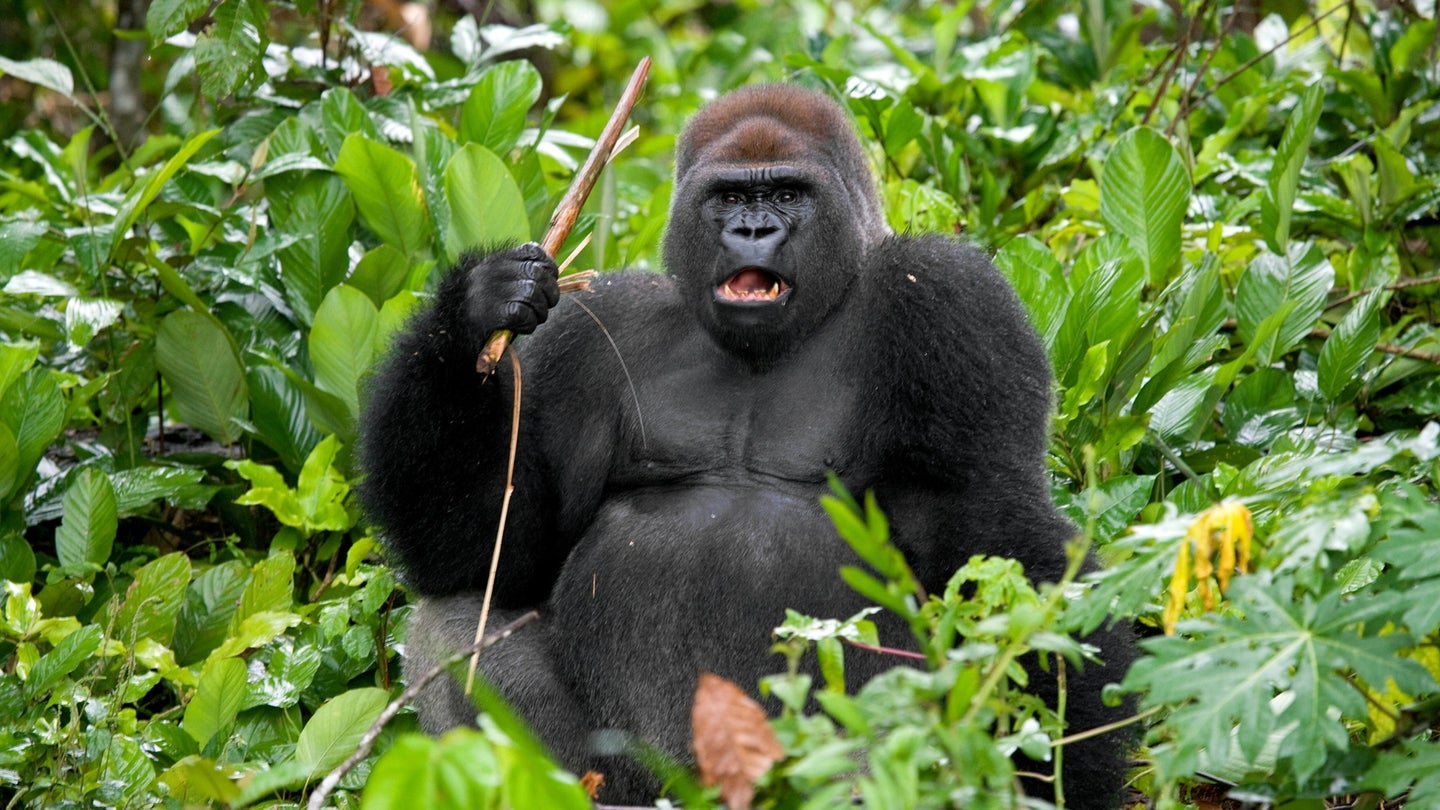Gorillas like to scramble their brains by spinning around really fast
Humans aren't the only animals that want to get tipsy.

Humans have been experimenting with mind-altering plants for many millennia now. . Modern-day drugs such as opium were being used in Europe around 5,700 BCE, and cannabis seeds started showing up in archeological digs in Asia some 10,000 years ago. Some studies have shown that ancient hominids have been using psychotropic plants and drugs as far back as 200 million years ago.
While tripping might seem like an exclusively human desire, it turns out that some of our closest great ape relatives might also find ways to switch up their state of mind—but instead of using plants and other substances, they just twirl around really quickly. For research published today in the journal Primates, researchers watched 40 videos of great apes spinning around just to get dizzy. And they think these actions could have some clues into why people have often seeked innovative ways to get a little high, drunk, and what have you.
[Related: Why do humans talk? Tree-dwelling orangutans might hold the answer.]
“Every culture has found a way of evading reality through dedicated and special rituals, practices, or ceremonies,” study author Adriano Lameira, an associate professor of psychology at the University of Warwick, said in a press release. “This human trait of seeking altered states is so universal, historically, and culturally, that it raises the intriguing possibility that this is something that has been potentially inherited from our evolutionary ancestors.”
Inspired by a viral video of a male gorilla spinning in a pool, the team found dozens of videos of gorillas, chimpanzees, bonobos, and orangutans going round and round, often using ropes or vines. The researchers then analyzed the movements, finding that on average the apes spun 5.5 times per session, with an average speed of 1.5 revolutions per second. Most animals then repeated the session three times in a row. This is about as fast as professional dancers, circus artists, and Dervish Muslims twirl, according to the authors.
The apes themselves would often be so dizzy after a bout of twirling that they were noticeably dizzy and likely to lose their balance. To understand the feeling of euphoria after such a feat, the team tested out twirling at the same speed and intensity themselves, and actually struggled to get to the third round due to dizziness.
[Related: These long-fingered lemurs pick and eat their boogers, just like humans.]
Previous studies on why humans crave self-induced dizziness have focused on alcohol and drug use, but the authors of this study argue that simple spinning could be worth a deeper look. After all, the ability to make or find mind-altering substances requires knowledge, skills, and tools that we aren’t sure humans or pre-humans had access to, Lameira added. Additionally, there could be links with mental state and boredom, as the videos recorded were mostly of captive apes.
“What we wanted to try to understand through this study is whether spinning can be studied as a primordial behavior that human ancestors would have been able to autonomously engage in and tap into other states of consciousness,” Lamiera said. “If all great apes seek dizziness, then our ancestors are also highly likely to have done so.”
